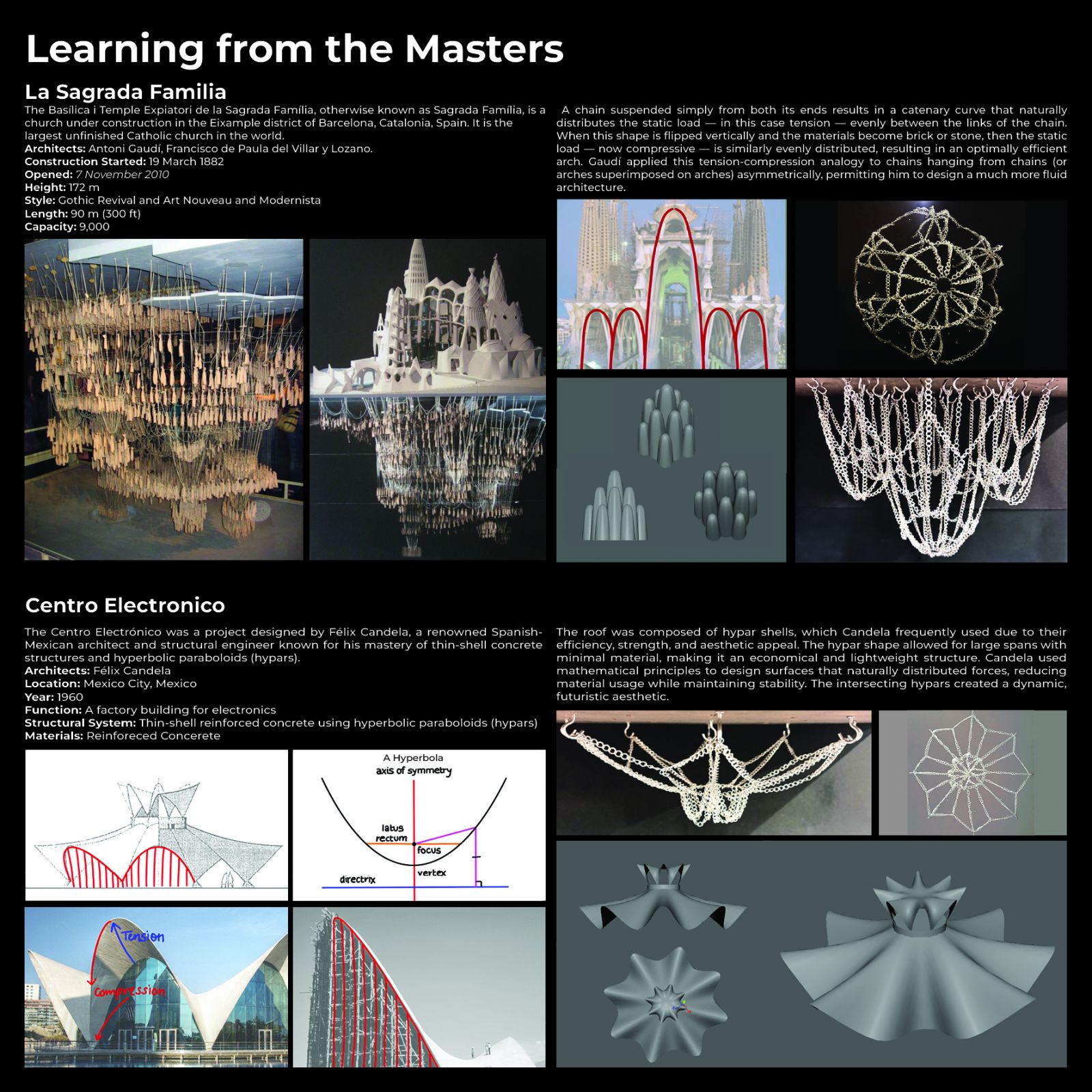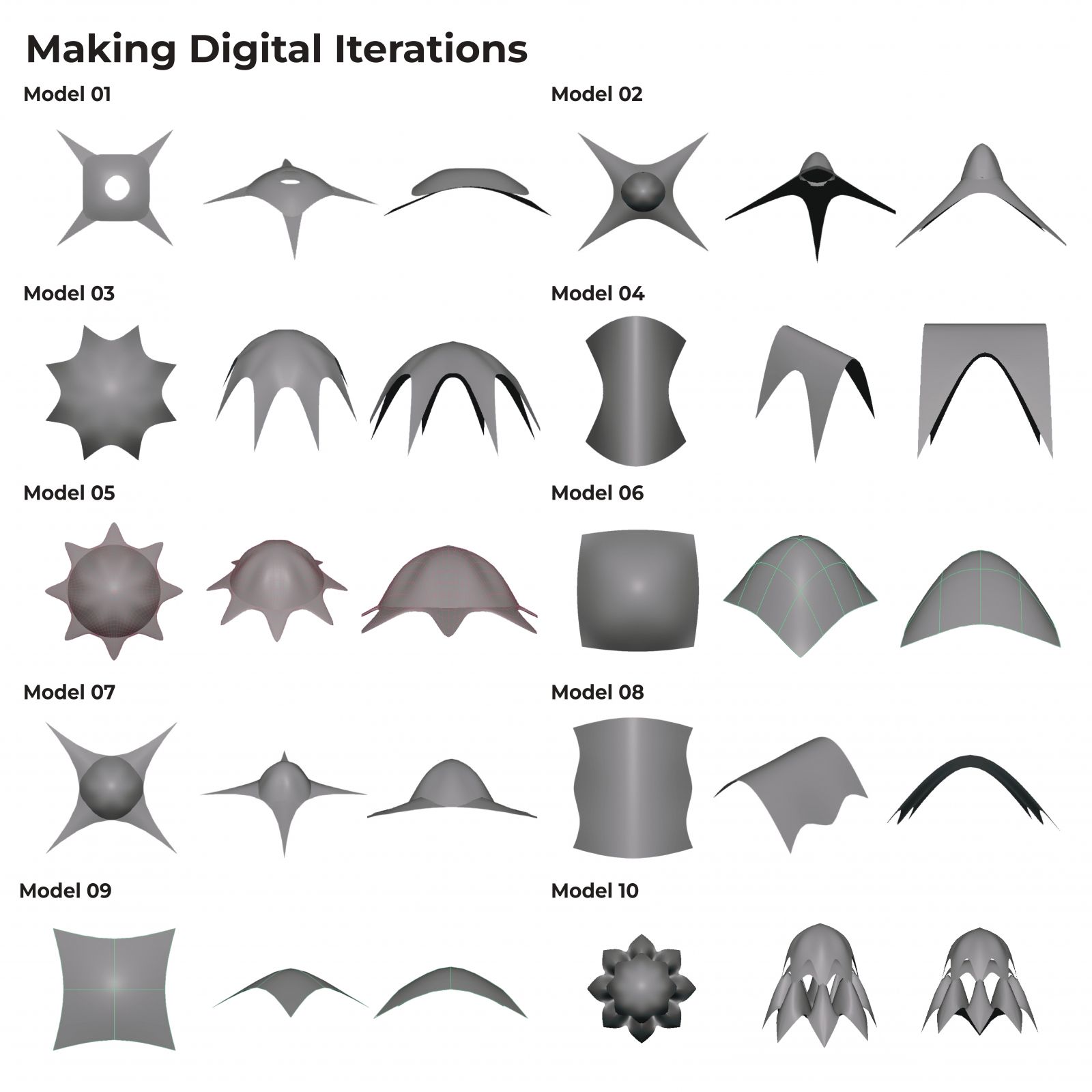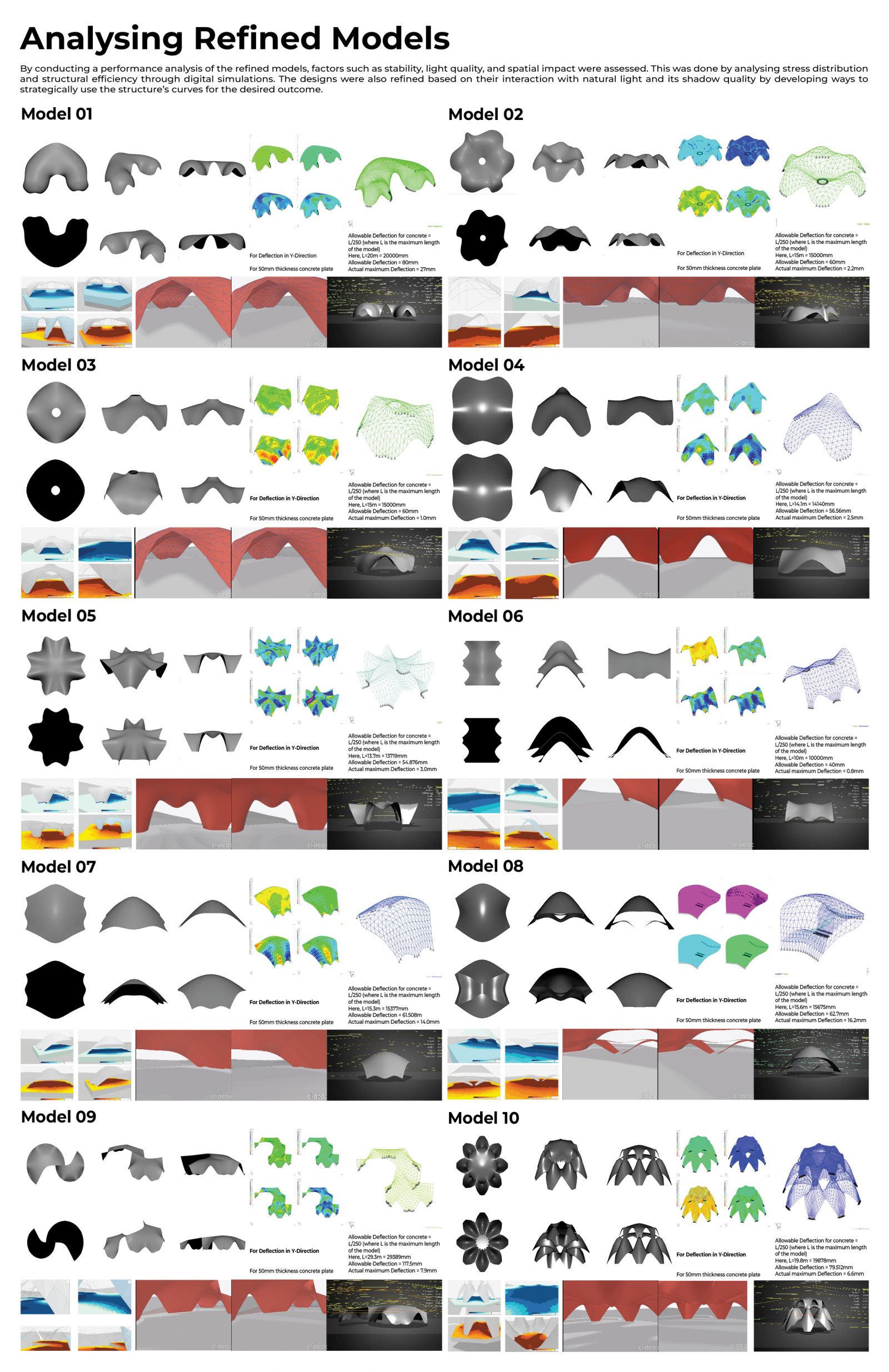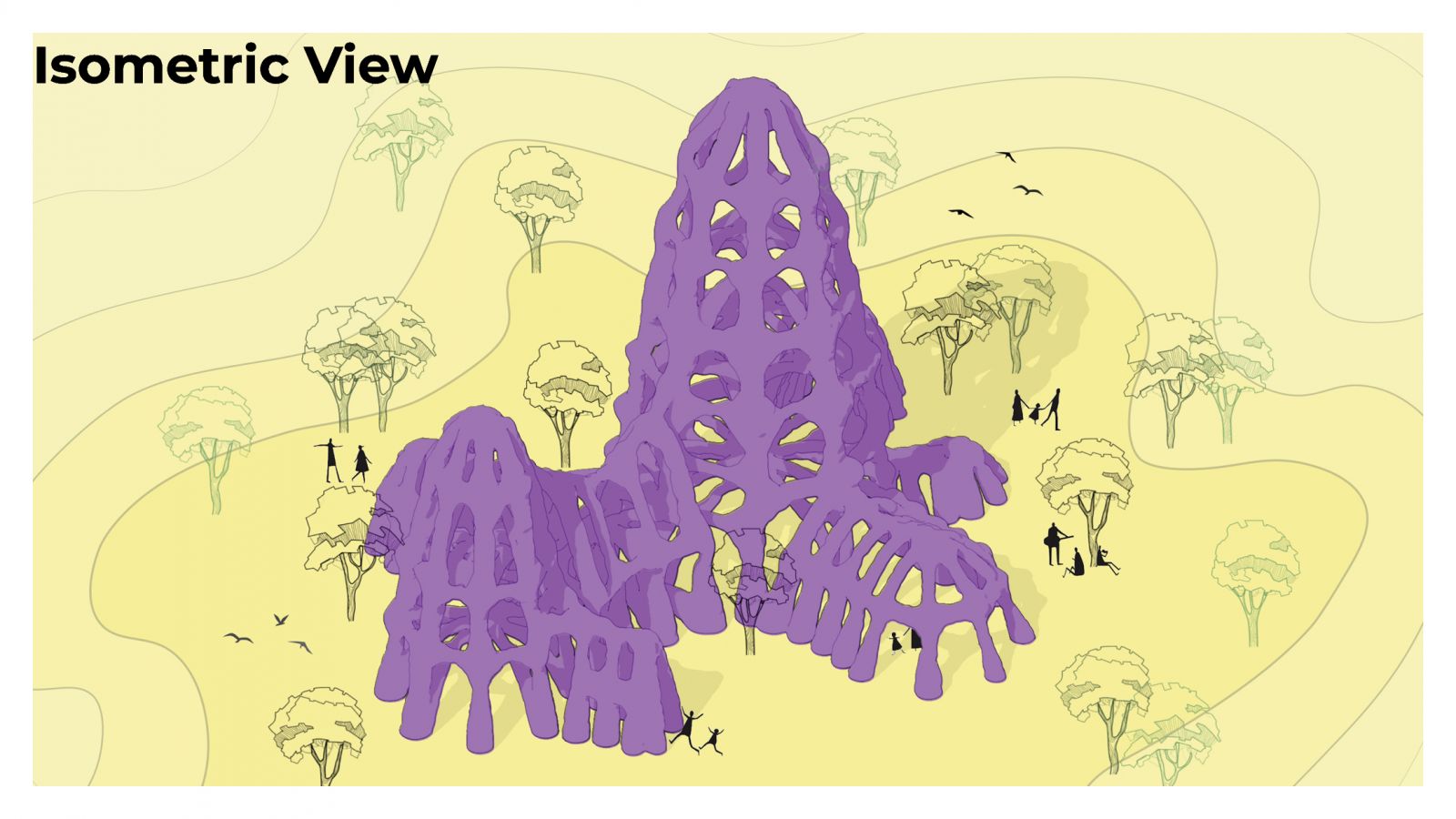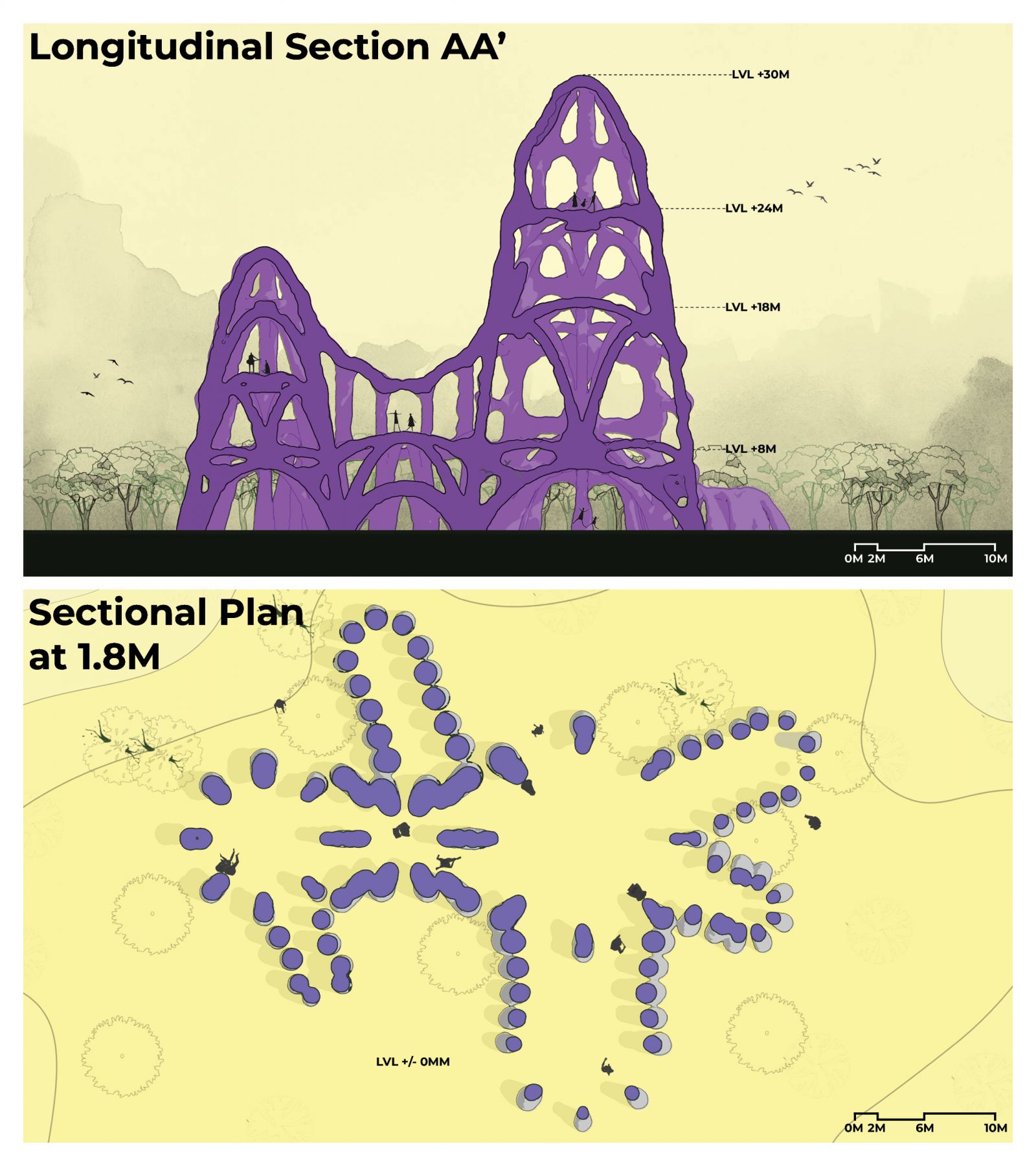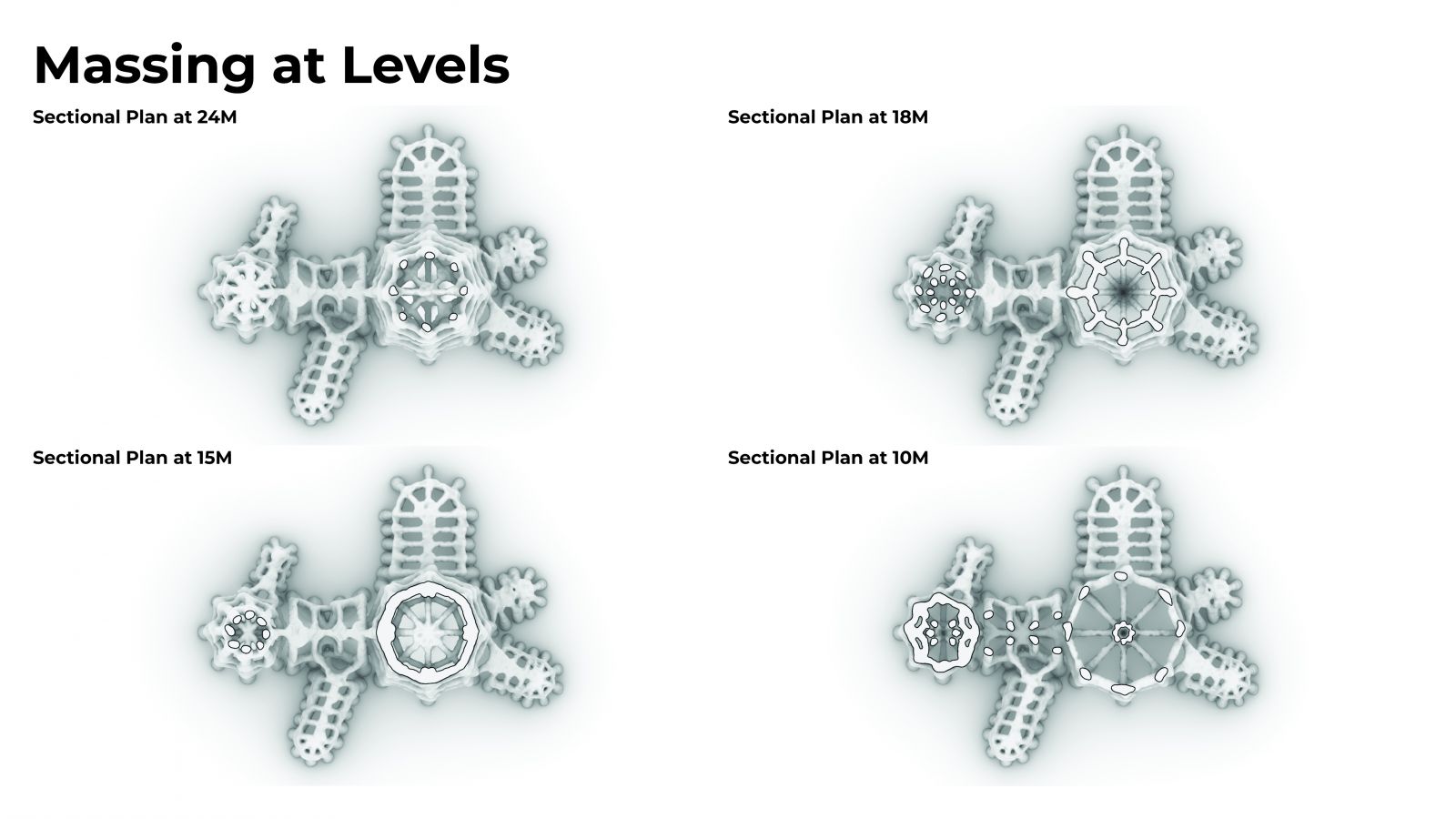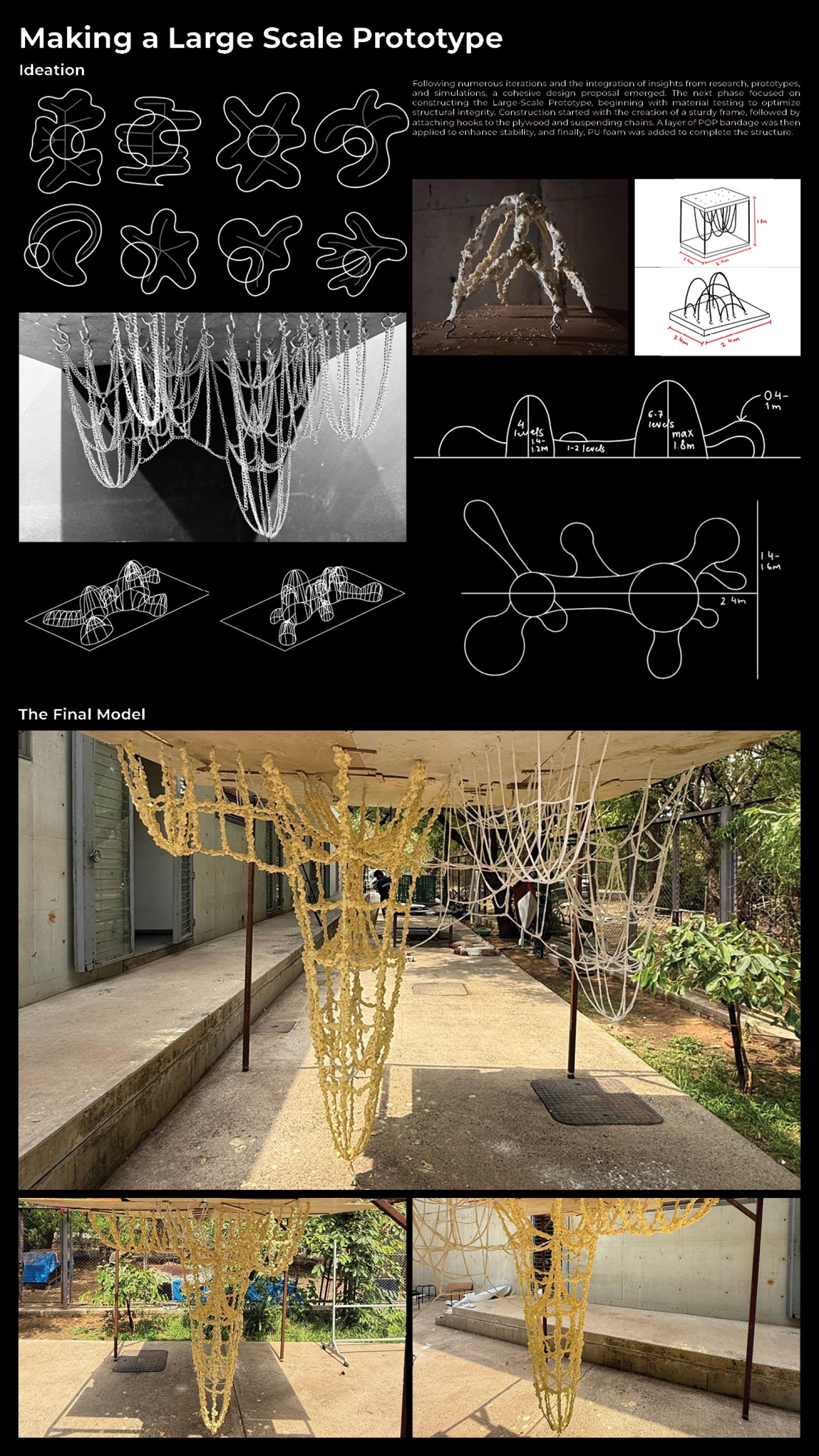Your browser is out-of-date!
For a richer surfing experience on our website, please update your browser. Update my browser now!
For a richer surfing experience on our website, please update your browser. Update my browser now!
The core of the project revolves around form-finding techniques inspired by catenary curves, which naturally emerge from hanging chains under the influence of gravity. By examining how gravity creates structures and employing an iterative and hands-on methodology, the process includes building various small-scale prototypes, conducting material tests, and structurally analysing forms to create spatially dynamic and structurally sound architectural forms. The final objective is to design and construct a large-scale prototype that embodies the principles of hanging chain models and catenary curves. The structure will demonstrate how gravity-driven form-finding can be harnessed to create elegant, efficient, and expressive architectural spaces.
